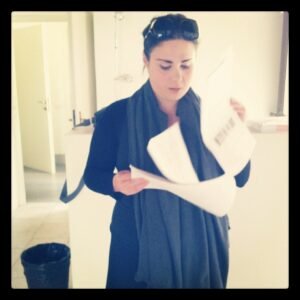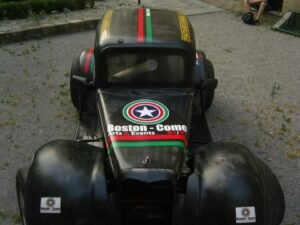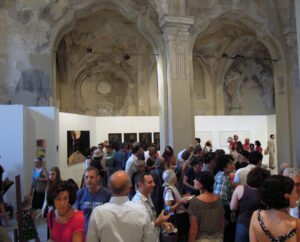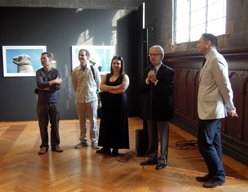BOSTON-COMO
more than an art exchange
In a world increasingly divided between East and West and in which people often speak of a real cold war between the two economies, it is interesting to investigate what really are the homogeneities and the strong points within the Western culture, that is the economic and social block consisting mainly from Europe and the United States. Is this cohesion a merely economic issue or, actually, does it exist one shared culture, one lifestyle and one imagination that sharply identify the West? Probably, is the economic crisis we are experiencing just a reflection of a social collapse? In this project we assembled a group of nearly 40 artists, half Italian and half American, who talk to each other in search of a line of continuity between two intellectual visions. The aim of this exhibition is to find points of agreement and disagreement between the experiences and the sensitivities of artists chosen to represent different generations and different ideas, also expressed in all the media that the today’s contemporary art has at its disposal. Painting, sculpture, photography, but also video, performance, site-specific installations, active involvements of the public and guided tours through the city will introduce the audience to a reflection on the Western system, developed in a deeper way than the already usual reflections of a economical nature. Indeed, the research is based on three fundamental points: the historical heritage, the urban vision and the representation of contemporary man. These topics are not accidentally chosen and the idea of conceiving the exchange project with this reasoning as main guideline, is born when I moved to the East, specifically in Hong Kong, and I started to see the Western world from the outside.
At that time, in October 2012, I was just contacted by Fabrizio Bellanca for working together in an exchange project between Como and Boston, where he was in contact with James Hull. The show was supposed to have a single site by city, less than half of the artists and no specific guidances regarding the topics. But I knew it would become something more. I began to think about the sense of doing a cultural exchange between the two cities, a statement of reasons not solely based on the “passing around” of the artists in order to procure visibility. Having just arrived in Hong Kong, very rich city that lives the China’s economic boom combining it to the benefits of the European cultural heritage left by the British, I was lucky enough to view my western world from the outside and to notice a few things just in time to let the Boston-Como project grow as a real research project.
Contrary to what I expected, what floored me by the East, especially in Hong Kong and in China, were not the differences with Europe, but the lack of a real detachment. Once arrived, what struck me most of all was the height of the city, the reflecting skyscrapers, the lights of the night, but I soon realized that it was the same kind of fascination that an Italian has got arriving in New York or even in the newest neighborhoods of London and Berlin. Of course, on Hong Kong there was an impressive concentration of buildings, placed against each other as a matter of practical lack of building land. The skyrocketing prices were the cause of small apartments, tight spaces, and they forced people to be sacrificed in their own intimate spaces. For this reason, people were pouring out the streets of Tsim Sha Tsui and Mong Kok, especially from six o’clock to midnight, going from one shop to another, exercising the second thing that struck me most of the city: the shopping. An exaggerated, compulsive, neurotic shopping, a consumption as I had never seen before. The city was comparable to one open-air shopping mall. No, not really. Because from a shopping mall one could get into another one, walking on pedestrian closed bridges built in mid-air that hung over the streets by ensuring that the city was walkable without ever leaving the labyrinthine mechanism of the shops and of the commercial offers overwhelming as in a luxury fair. It was in front of this consumerist regality that I wondered what was left of the romantic cultural heritage that identifies in the East an alternative lifestyle based on a spirituality of other times.
From our own house, we idealize calm melodies of flutes that form the background to flowered gardens in which are hidden blue and red Chinese pavilions, tile roofs as yellow as those of the Forbidden City, branches, rocks and streams, quiet paths where elderly men meditate in the shade, and prudish and minute young women dressed by their silk chaongsam decorated with golden petals, slowly move their own fans. But this vision is broken by the contact with a reality made by crowded, very noisy streets, characterized by a pressing and urgent fashion. Businessmen move quickly between a stream of beautiful women who like to show themselves on high heels and skimpy cutting-edge dresses, many times coated with Italian brands. Pop music comes out from the taxis moving slowly in traffic, from the shops, from the cafes where they are taking place discussions about the financial market. A new New York in its heyday fills the eyes of Westerners who travel to Central in Hong Kong looking for a trace of the disappeared East which still persists only in the peripheries and in the Chinese villages, but agonizing, pushed away from the construction of new skyscrapers and subway lines.
The feeling is of being in a world more west than ours, where the negative values we are used to claim – consumerism, plutocracy, superficiality, haste, external appearance – are even more present and where the positive ones are growing with a continuous awareness campaign, a brilliant optimism and the idea of a possibilities and an accessibility that hovers in the air, as if the “American Dream” had been moved to a new house and had inhabited a new land where every morning one can wake up thinking that everything can happen.
Then, what do we have to couple with the “Western” lifestyle, thought for a long time in relation to the consumer society, to the fast pace of life, to the strongest economic markets, the industrialization, the scientific advancement, as well as to the cultural progress and to the social values ??of tolerance and liberalism? What does it distinguish us as a western society? What does it harmonize us as the people? Why if we talk about Europe and the United States the eastern world does not make a great distinction and is inclined to identify us with one single “western world” that does not have vast differences in life-style between the old and the new continent?
For Europeans, the American dream is still recent, distant only one century, when in the families of each of us at least someone emigrated to America on a ship full of people in search of hope and well-being. At that time, Europe and America had very little in common, Europe was a land destroyed by war and was preparing for a new economic boom that would take place only as a corollary of the American one. Drived from the States, we reassembled our cities – first of all Berlin, the symbol of the European twentieth century rebuilt looking in part to the U.S. Gigantism; we then invented a more democratic and liberal society with such a social leveling that allowed everyone to have certain rights to equality protection, expression and education; we established the consumerism developing brands on a large scale with a mass target; and we sped up our pace, focusing on the production and on the offer of goods that became needs through the communication. But now this assimilation phenomenon, the European-American osmosis, has become a global phenomenon. I then thought, what the Orientals mean talking about “western world”? That respect and fascination they pay to Europe, are actually directed to which aspect that still acts as a gap between us and them, constituting a diversification and then a wealth within the era of the global flattening?
Few weeks after that first trip to Hong Kong, I went back to Europe to meet again Fabrizio Bellanca in Como in order to continue to talk about this project and to hold meetings with the Assessor Cavadini of the Municipality of Como and with our private supporters. By reviewing Italy with a new glance, the difference that I had expected in the east and that I had not found, it struck me just returned home. I remembered the verse by Pascoli: “There is something new under the sun, or rather something old: I live elsewhere”, and I saw with a totally unknown eye the, at the same time, old and new towns, roads, paths that led me to from Malpensa Airport to the center of Como to discuss a project that I had finally seen in its importance, because I finally figured out the real caliber that the Western world still retains, exceeding the phenomenon of globalization on a unappealable field: history. Within a few days the project became much larger, I spoke with Fabrizio about my ideas, we asked the Municipality of Como to give us the use of three public venues instead of only one, we involved the Chamber of Commerce of Como and looked for the support of several private spaces, including the gallery of Roberta Lietti, and along with James Hull we increased the number of artists invited to more than double. It was a brave action – not to say reckless – because the time to seek more sponsors were very tight and many sponsors, rather than give more support, withdrew. With a budget thinner than planned we had to handle an event at least tripled as amount of effort, work, energy and objective costs.
What has emerged is a somehow “poor” exhibition, with a catalog that should have been much more burly but that was unable to be, a communication very professional but not widespread as we wanted, with very little facilities for the artists who, however, have attended with undiminished passion and confidence in the project. The few available means have not weighed on the quality of an idea, on the enthusiasm of those who have worked on it, on the skill of the artists. Contrary, I dare say that they have given to the project an additional testimony of one of the main points to which the reflection of the exhibition develops: the crisis of the Western world.
The great economic crisis that we are experiencing is due to the market entry of new forces more vigorous, competitive, often more potent since ruled by ruthless expansionist logics, just as happens in many areas of Asia. But perhaps it is also due to a severe crisis of identity that has affected our society like a disease when it has been forced into an unnatural definition. The forced aggregation that has joined the United States to Europe after the world wars and the creation of a limping European Union, were fast and coercive mechanisms designed to create a power pole, a “western world” defending the interests of a very nebulous supposed common mentality that characterizes us compared to other areas of the world. But we were not ready yet. It ‘s true, there is a unitary point of origin in Western thought, a historical root that acts as a connecting line and that starts from the greek-roman world carrying out certain values ??and systems. But have they developed in a uniform manner? Or at least enough uniform to justify at deep-level the division of the world between East and West?
In the essay “Orientalism”, published in 1978 by Edward Said, the West is basically described as a creation that is opposed to a vague “oriental” identity in order to legitimize the imperialist and colonial domains. Therefore, the creation of the two blocks would be a pure invention for political purposes as well as forced would be a Westernness built from countries so different as we are. For this reason I asked Fabrizio Bellanca, James Hull and all the invited artists for a testament of their vision and for a comparison, site by site, between the Italian artists and the American one, working together on the same subjects but without substantial agreement, without demanding the defense or the opposition to any particular thesis. I want to say that the artists themselves were quite unaware of the projectual work that was behind the exchange “Boston-Como”, so as not to force and guide their work. If they had known, suspected and conceptualized the underlying theme, their research would probably have been not spontaneous, but tendentious. Instead, I tried to have a natural reconnaissance dividing the artists on show into three macro-specific issues, meeting their work and exposing their own line of research, rather than ask them to work in favor of a thesis of mine. Just so the audience can see today a real cross section into the Italian/European vision and the American one, giving the possibility of a direct and spontaneous comparison highlighting similarities and differences between the two imaginations.
In the former church of San Pietro in Atrio they are explored natural and urban vision of the world, the division of space, architecture and the environment; Spazio Natta hosts a reflection on the representation of contemporary man in his emotional and social aspects according to the models of today’s society; while in the former Palazzo Broletto there are works that examine historical heritage of Western culture, from mythology to a reworking of the classic codes accordingly to a perspective both ethical and aesthetical. To these three topics must be added performing operations and site-specific installations in various areas of the city, a little research on the contemporary abstraction in Chamber of Commerce and a parenthesis related to the boundary between art and design at Galleria Lopez. In each location the artists were left completely free to present their research as well as deepened over the years, spontaneously putting together their solutions and opening a non-biased comparison between the American and Italian part, proposed always together, side by side, in order to create a platform for the direct dialogue that will be born from the works themselves and by the presence on the ground of the artists. These will reach Como from Boston, Milan, Berlin, Hong Kong and other cities where they live while being all American or Italian. During the exhibition, events, meetings with the public, the performances and the various initiatives planned, their living together and the daily deal on a human level will create what is the real research that the project aims to do: a gathering of personal and cultural baggage that converge in a point to meet and discuss.
In this text I will not speak about the specific work of each artist, although it was what I promised to Fabrizio and probably what the artists expect from me. But in the rear of this catalog there is a brief biography and a brief statement for each one that will surely be more thorough than what I could in an introductory text like this. I think it was much more interesting to tell the genesis of the show to make people understand a project in which the artists were free to choose which works to expose and where the set up will be designed with them directly in exhibition. It is an experiment of extreme freedom, especially for me that in all the important projects have always tried an absolute control, a perfect planning and the demonstration of a specific thesis. But not in “Boston-Como”. For the first time I do not want the curatorial vision as an additional conditioning as well as the indispensable selection of artists. I wish that their meeting offered a spontaneous solution to the questions posed here. It is an exhibition built as a workshop, as a study more human than artistic, a show that can not be fully explained by a critical description nor by any other kinf of written text.
A dear friend from Hong Kong once explained to me a difference between the west and the east, and concerns the way we work. He told me that in China when one comes to work is extremely cold and does not become influenced by personal emotions. In our western world, instead, it is the opposite and the project “Boston-Como”, since he was born, has grown into a huge passion as well as a big professionalism. Fabrizio, James and I have often saved it from desperate conditions, from discontent seemingly insurmountable, from economic problems that would have discouraged anyone who was willing to do just business. But not only that. Readers would be surprised if one could mention how many friendships have been developed working on this project and how many others got into difficulties, how many dinners were involved in the various parts of the world in order to prepare the show, and how many episodes of love and struggles , betrayal and pain, moments of doubt and frustration, of exaltation and joy, mediations and threats, plots and solutions are directly or indirectly correlated to the project.
Each show is a kind of micro-community with its stories and his plots, but the project “Boston-Como” is one of the most free and full human I’ve ever worked on, developed in nearly one year of meetings, daily and nightly calls, time zones to cross, mentalities to join. I think the result – as a whole from the method of work to the final works exposed – is really a field of study on Western identity, on its solid foundation and on its current crisis. And in this the operation was successful. As the show in itself, I want to remind before closing, that many of the artists involved are already well known and recognized by both the Italian and American side, as evidenced by their own biography at the end of this catalog. However, the fact remains that seeing this show as a simple exhibition, a canonical project of art, a collection of works, restricts the intent of those who have worked on it and restricts the audience from taking part in a far wider motor of ideas. Therefore, my plea is to observe the exhibition, the pieces displayed, to get a solution to the issues here discussed from the visual comparison between the American and the Italian works but, above all, to do not stop here: I suggest that you return in the exhibition, talk with the artists who have attended from around the world specifically to meet you, take part in meetings, come to the concerts, to the dinners, to the performances, stop us in the street, fully live this experience that in the words of Fabrizio Bellanca is “more than an Art exchange” and in my is “much more than an Art show.”
by Carolina Lio
June 2013

















































